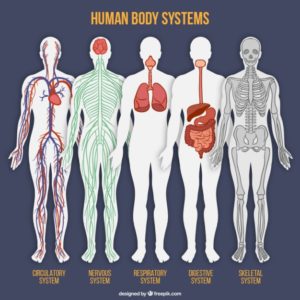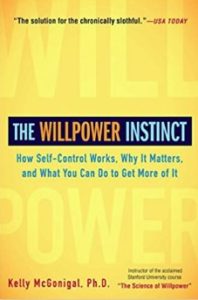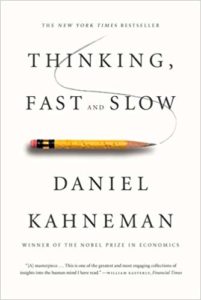As promised, in this lesson, I will talk about how willpower works. Let’s start with how the human body works. The human body is remarkably designed. Consider all of the redundant systems in the body. You could see with just one eye, but you have two. You could pick things up with only one hand, but your abilities are enhanced by two. You have two ears, two kidneys, and two lungs. You get the point.

This is not the end of the redundancy. Multiple systems operate in your body at the same time. The nervous system processes sensory information while the circulatory system keeps your blood flowing, the respiratory system keeps air flowing, and the endocrine system regulates hormones. This redundancy is not just limited to the body.
The mind functions on multiple levels too. We think in terms of left brain and right brain functions, and while that is a crude, imperfect way of thinking about how your brain functions, it is correct to say that different regions of the mind regulate different functions.
In Thinking Fast and Slow, Daniel Kahneman showed us how we switch between two different mental systems. He refers to these as system 1 and system 2. System 1 is emotional. System 2 is slow but rational and logical. Humans experience both systems regularly. The question is when we should utilize which system.

In the Willpower Instinct, Kelly McGonigal talks about two mental systems related to willpower. When we are threatened by an acute danger—say a mugger—our bodies go into a fight-or-flight response. The amygdala is alerted. Blood pressure rises. Blood flows from the less important regions to the large muscles to give us the best chance of successfully facing the threat.
However, when we face a willpower challenge—say a delicious dessert when we are trying to eat right—a different system is activated. Here, the fight-or-flight response only makes you more vulnerable to the temptation because the wrong regions of the brain and body are activated. University of Kentucky psychologist Suzanne Segerstrom calls this the pause-and-plan response. McGonigal wrote:
The self-monitoring system is just waiting to detect warning signs—in the form of thoughts, emotions, and sensations—that you are about to do something you will later regret. When your brain recognizes such a warning, our good friend the prefrontal cortex jumps into action to help you make the right choice. To help the prefrontal cortex, the pause-and plan response redirects energy form the body to the brain. For self-control, you don’t need legs ready to run or arms ready to punch, but a well-fueled brain ready to flex its power….The pause and plan response drives you in the opposite direction of the fight-or-flight response. Instead of speeding up, your heart slows down, and your blood pressure stays normal. Instead of hyperventilating like a madman, you take a deep breath. Instead of tensing muscles to prime them for action, your body relaxes a little.[1]
If you have ever experienced a heated argument where you could hardly thing straight, you were likely engaging the fight-or-flight response. If you have ever experienced a time were you coolly and rationally worked through a thorny issue without losing your head, you were likely engaging the pause-or-plan response. If you are like most people, you have had both experiences.
One of the tricks to willpower is using the correct system at the correct time. In the next lesson, we will talk about how to amplify your willpower reserve.
What About You?
Are you aware of when you are in fight-or-flight? Do you know how to engage pause-or-plan? Can you see the differences between the two systems?
References
[1] McGonigal, K. (2012). The willpower instinct: How self-control works, why it matters, and what you can do to get more of it. New York: Avery. (pp. 36-37).
___________

Dr. Darin Gerdes is a tenured Professor of Management in the College of Business at Charleston Southern University.
All ideas expressed on www.daringerdes.com are his own.
This post was originally created for Great Business Networking (GBN), a networking organization for business professionals where Dr. Gerdes is the Director of Education.
___________

